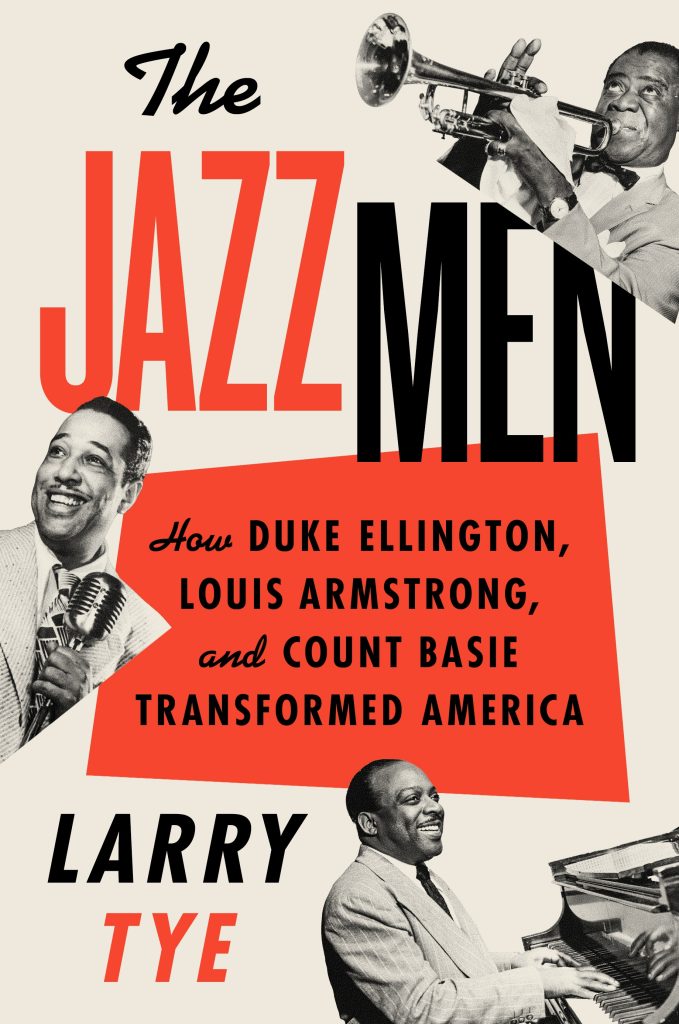By Terri Schlichenmeyer
Your toes didn’t wait long before they started tapping.
They knew what was coming, almost as soon as the band was seated. They knew before the first notes were played and the hep cats and jazz babies hit the floor to cut a rug. Daddy, it was the bee’s knees but in the new book “The Jazzmen” by Larry Tye, if you were the Sheik on the stage, makin’ cabbage wasn’t all that swank.
Louis Armstrong was born in 1900 or thereabouts in a “four-room frame house on an unpaved lane” in a section of New Orleans called “Back o’Town… the Blackest, swampiest, and most impoverished” area of the city. His mother was a “chippie” and the boy grew up running barefoot and wild, the latter of which led to trouble. At age twelve, Armstrong was sent to the Colored Waif’s Home for recalcitrant Black boys, and that changed his life. At the “home,” he found mentors, father-figures, and love, and he discovered music.

Even as a young teenager, Edward Ellington insisted that he be treated like a superstar. By then, his friends had nicknamed him “Duke,”for his insistence on dressing elegantly and acting like he was royalty. And he surely was – to his mother, and to millions of swooning female fans later in his life.
Three men, born at roughly the same time, had more in common than their basic ages. Two of them had “a mother who doted on… him.” All three were perform-aholics. And for all three, “Race… fell away as America listened.”
Feel up to a time-trip back a century or more? You won’t even have to leave your seat, just grab “The Jazzmen” and hang on.
In his introduction, author Larry Tye explains why he so badly wanted to tell the story of these three giants of music and how Basie’s, Ellington’s, and Armstrong’s lives intersected and diverged as all three were near-simultaneously performing for audiences world-wide. Their stories fascinated him, and his excitement runs strong in this book. Among other allures, readers used to today’s star-powered gossip will enjoy learning about an almost-forgotten time when performers took the country by storm by bootstrapping without a retinue of dozens.
And as for the racism the three performers encountered? It disappeared like magic sometimes, and that’s a good tale all by itself here.
This is a musician’s dream book, but it’s also a must-read story if you’ve never heard of Basie, Ellington, or Armstrong. “The Jazzmen” may send you searching your music library, so make note.




